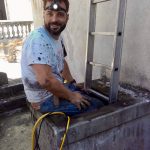We are delighted to welcome Joe Orovic to TCN, officially our 100th contributor since the website started in July, 2015. Joe’s last article online was for The New York Times, and we are thrilled that he has decided to start writing for a more serious portal… A fascinating first piece on December 5, 2017, looking at the realities of living on an island with no water, including probably the most in-depth account of cleaning a water tank in Dalmatia (including video) which exists online in English.
I clicked off the headlamp on my forehead and looked up at the narrow opening of the cavernous cistern, a column of sunlight spilling around me. A thin rope slipped through the light to my feet, where a pink bucket awaited its ascent.
I yanked the line and wiped my brow. “Ajde,” I huffed softly, my voice amplified by the walls dripping all around me.
My aboveground helper, Njolo, heard the cue and began lifting. The bucket began a stuttering climb up, up toward the narrow opening, up to the light, carrying with it a small fraction of the botanical detritus, dead animal remnants and mildew I’d just power-washed off the walls.
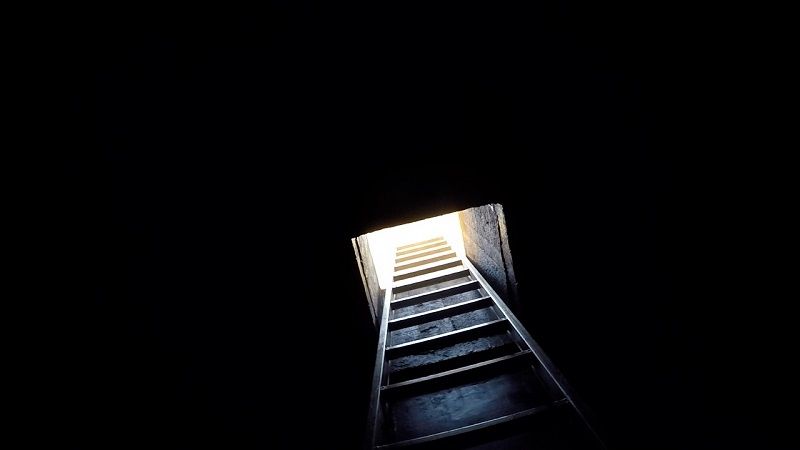
Up to Njolo, who’d sneak off to some nearby thorn bush and dump out the contents, which resembled a cross between squid ink and used motor oil. Then the bucket dropped back down to me, where more sludge waited.
About two dozen of Croatia’s 47 inhabited islands still lack a constant water supply. On some, residents anxiously await the arrival of water-carrying tankers or trucks. On others, locals perversely rejoice at the sight of rain, knowing they can take at least one guilt-free shower. I call one of these islands home.
Welcome to Iž, an amoeba-shaped speck off the coast of Zadar.
Where residents still rely on mother nature for potable H2O — rain sliding down pitched roofs to zig-zagging gutters which lead to manmade underground cisterns, known in our dialect as a “gusterna.”
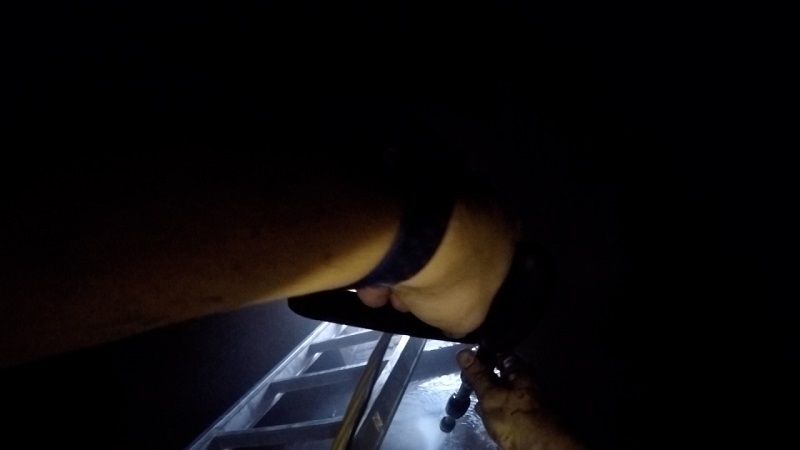
Where even newly-built houses must include a cistern in their blueprints.
Where a month sans rain induces nervousness.
Where a cistern running dry leads to awkward knocks on a neighbor’s door, or arrangements with weekenders to “borrow” water when necessary.
Where a water-saving habit sometimes pushes one to take a second sniff of themselves and ask, “Is it bad enough to waste precious water on a shower?”
Where locals still, on occasion, descend into these archaic water-collection holes next to their homes, blasting and scrubbing off the sludge and mildew lining the cistern’s walls and floor. (A quick check of the calendar reveals it is 2017.)
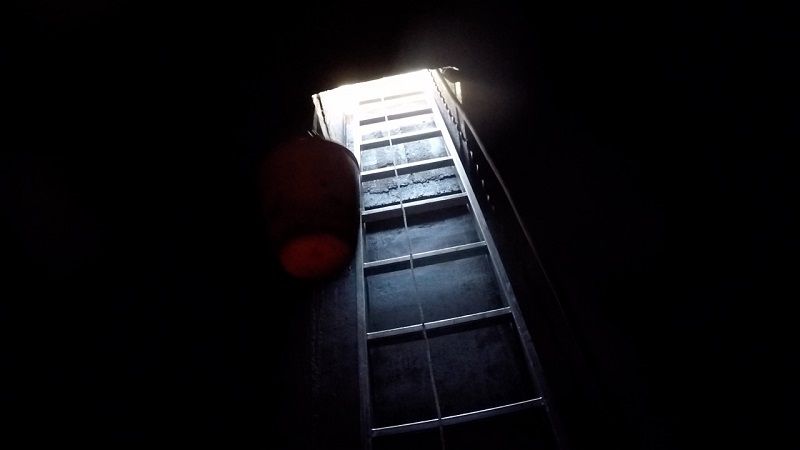
I found myself in this disorienting hell — ankle-deep in muck surrounded by pitch black, the sound of every movement and drip magnified tenfold — on a random autumn Thursday, watching slop ascend up to the light.
The bucket suddenly wobbled, careened sideways then snagged against the cistern’s opening and tipped.
I tried to duck out of the way.
Slfop.
My left shoulder and arm, covered in muck, began releasing an odor. I then remembered a bewildering wad of fur I scraped off the floor and unleashed a symphony of well-crafted Croatian curse words, which Josip accompanied with a fit of giggles.
Ah yes, the siren’s call of life on a Dalmatian island: detachment from the hustle bustle of modern life; a slower, moderate pace; a deeper connection to nature; a healthier lifestyle.
The brochures and luxurious travel pieces somehow failed to mention the gentle stench seeping into my skin. Slogans like “The Mediterranean as it once was” conveniently glossed over this. And for good reason.
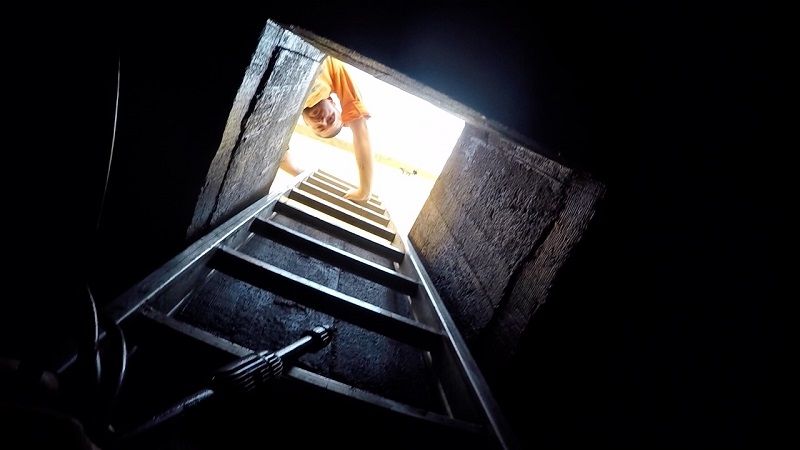
Croatia boasts an impressive history of innovation well beyond neck ties and Nikola Tesla. It gave the world smart benches, The Bench, a bonkers electric supercar with a goofy competitor.
Yet this knack for innovation skips Iž and other water-desperate islands like it.
Little has changed in the 20 years since Croatia’s Parliament adopted its National Program for the Development of Islands, still clinging to a “spend kunas and hope the problem solves itself” mentality.
The Ministry of Sea, Transport and Infrastructure has repeatedly tossed money at the problem over the last two decades; 94 million kuna here, another 106 million there, and so on.
None of it enough to keep locals from descending into cisterns.
The government subsidizes the delivery of water to 27 of Dalmatia’s inhabited islands. The measure ostensibly ensures all residents disconnected from the mainland water supply pay no extra cost for transporting water via tanker or truck. It’s not working.
Reports show Croatia’s islanders pay some of the highest water prices in the country. Summer droughts generate headlines of a H2O nightmare. Some deliveries arrive late. Others don’t arrive at all.
Finally, some progress this year. EU-funded projects and infrastructure redesigns have led to improvements on islands like Unija and Susak, which recently installed desalinators to transform seawater into drinking water.
The solution aligns with the Island Movement’s search for novel solutions which let Dalmatia’s Boduli (islanders) remain independent of the mainland, the group’s founder Maja Jurišić said in an interview.
“We’re striving for self-sufficiency for the islands. For water, we don’t want to be connected to land via underwater pipes,” she said, adding the current system of doling out contracts for water delivery is rife with corruption as well as paltry service.
The group hasn’t chosen one single solution for Croatia’s water-less Boduli, though Jurišić pointed to desalinators as a solid, albeit costly, option.
Independent production of drinkable water stands at the opposite end of Croatian MEP Tonino Picula’s suggestion: spend less water.
The Vice President of the European Parliamentary group in charge of islands launched a test project, picking two islands from France, Greece, Ireland and Croatia to participate in a “Water Saving Challenge.”
Lastovo and Vis, both in southern Dalmatia, joined the trial.
“A lack of drinkable water hits many European islands; the project aims to lower the use of water, saving water and money,” Picula said at the study’s onset.
The early results reportedly showed island residents could use nearly 25 percent less water with the right combination of technology and changed habits.
But saving water won’t end nightmarish descents into a dark, cavernous hole in the ground… then coming out looking like a swamp monster.
Of course, any solution may beget more problems at the other end. Literally.
Should the islands finally get a more generous — even infinite — water supply, where will all the sewage from our overflowing septic tanks go?
Who’s willing to risk getting hit with a bucketful of that slop?

